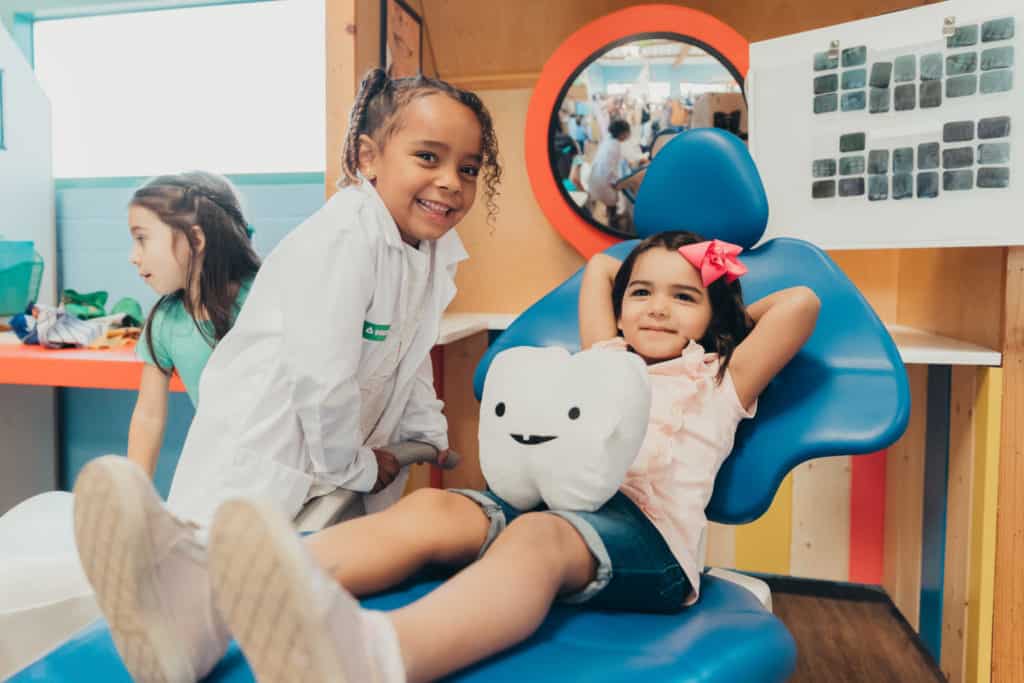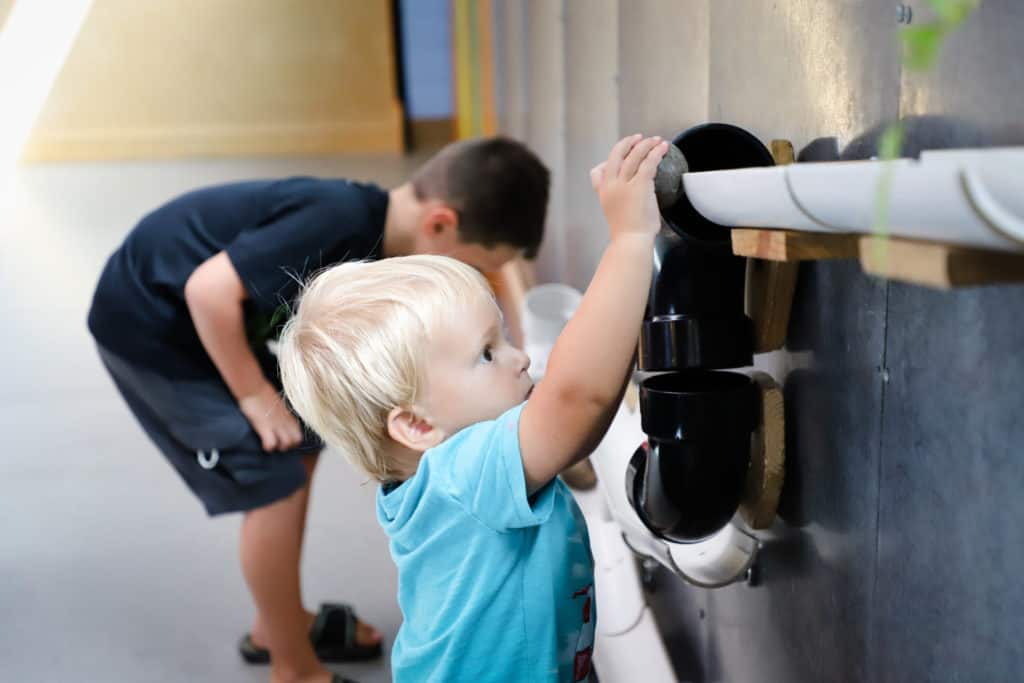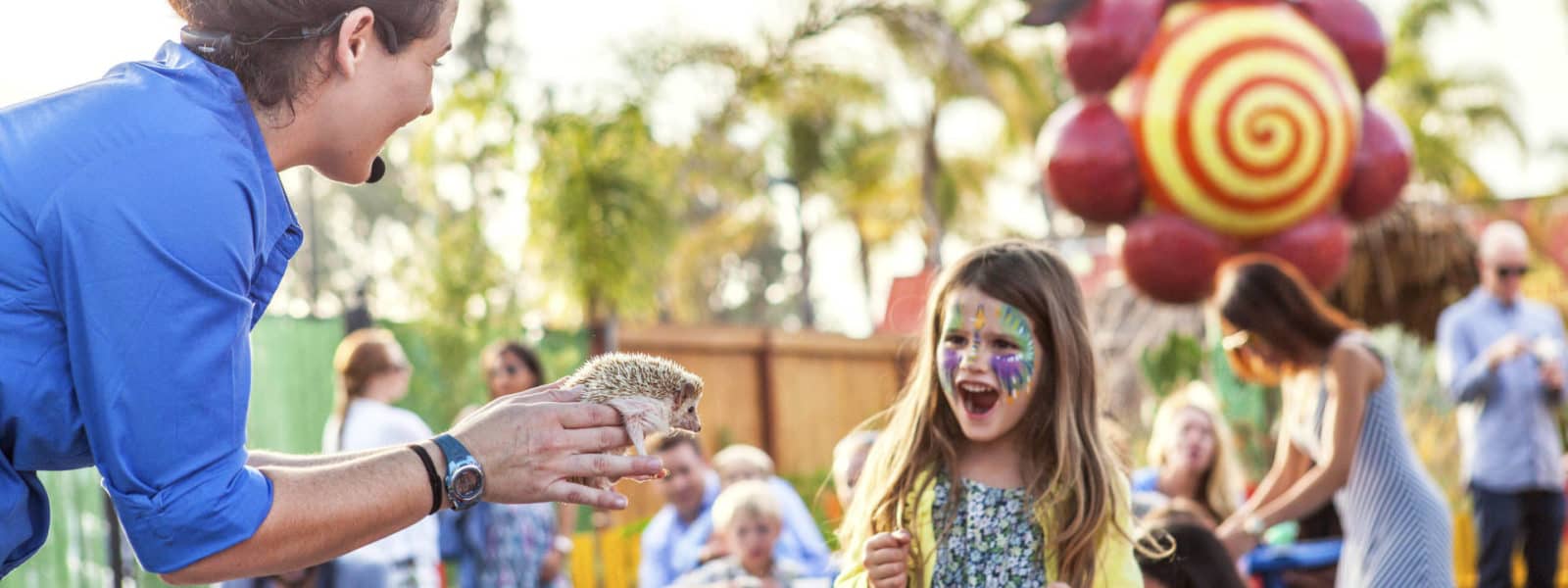What is a children’s museum? A play space? A gymnasium? A park? We know it can get confusing! By definition, a children’s museum is a place that serves the interests of children by providing exhibits and programs that stimulate curiosity and learning. So, what does that mean?
Visitors are often surprised to discover that children’s museums are more similar to play spaces than to museums in the traditional sense. But there’s more to stacking blocks and playing with wind tunnels than meets the eye. Stacking blocks provides crucial motor development skills for toddlers; playing with wind tunnels teaches children the intricacies of aerodynamics and natural forces. Through hands-on learning experiences, children can explore on their own terms and at their own pace.
At San Diego Children’s Discovery Museum, everything is designed to inspire children to explore, imagine, and experiment. Interactive experiences are an integral element of learning. When children are given the freedom to play, they develop life skills like curiosity, confidence, and creativity. These skills strengthen a child’s potential to excel in school, their future careers, their communities, and beyond.

It’s been well studied that play-based learning is impactful and encourages deeper learning in children. Children learn well when their minds are activated, engaged and interacting in a social setting — all characteristics of play. When a child steps into our Grin Land! exhibit not only are they playing the role of a dentist, they’re learning the ins and outs of what a dentist does and the importance of oral hygiene. The silliness of sitting in the dentist’s chair translates to confidence when they do sit in one at their next visit. They’re not intimidated by the metal tools because they’ve already seen them in an environment free of pressure. When we allow children to play, we allow them to explore their creativity and problem-solve in ways adults often can’t.
We know that children learn best when they are free to challenge ideas and brainstorm solutions. Museum educators are trained to encourage problem solving and critical thinking. When something doesn’t work, you’ll hear questions like “What would you change?” or “Why do you think it didn’t work?” Children are not told that what they did was wrong, but rather encouraged to try again and experiment. We focus on providing an environment where there are no right or wrong answers and children are leading the conversation.
As a children’s museum, we put the needs of children first. When exhibits are created, educators are often behind the scenes ensuring every element has an educational purpose. While some exhibits may focus on developmental milestones for toddlers, others will focus on more complex subjects such as environmental conservation or cultural understanding for older children. Programming is designed to encourage intentional play, a form of play in which children learn while exercising their creativity and using social interaction and talk to problem-solve.
The next time you walk into a children’s museum, don’t be afraid to ask the staff the purpose of activities and exhibits. Chances are, there is more to them than what first meets the eye. If you’re curious about the purpose of some of our exhibits, you can visit our exhibits page and click through our key areas of focus — discovery, experimentation, imagination, and exploration.
To learn more about San Diego Children’s Discovery Museum and plan your next visit, visit our website.
To learn more about other museum experiences for children, click here.
This blog first appeared on San Diego Children’s Discovery Museum’s website.



